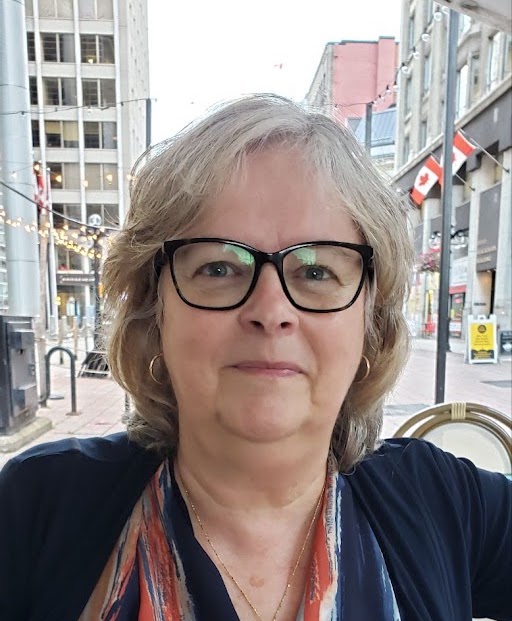iSTEAM
Innovation in Science, Technology, Engineering, Art/Architecture and Math
What truly sets AcadeCap apart is our meaningful integration of iSTEAM—innovation, Science, Technology, Engineering, Arts, and Mathematics—across all grade levels, from primary through secondary. This is supported by a dedicated iSTEAM lab, thoughtfully located near our media and art rooms, where students explore ideas across disciplines in innovative and engaging ways. The result is a dynamic learning environment where curiosity thrives and connections across subjects feel purposeful and real. Students participate in a wide variety of hands-on projects that bring iSTEAM to life. Each year, we partner with organizations such as Let’s Talk Science and engage in initiatives like Hour of Code and Computer Science Education Week. Our learners also take part in workshops led by experts from Scientists in School, Maker Junior, Carleton University, and the University of Ottawa’s Maker Mobile. These experiences empower students to explore, experiment, take risks, and grow as confident, creative thinkers.
iSTEAM
iSTEAM Curriculum
At AcadeCap, learning goes beyond memorizing facts. Our iSTEAM approach—Innovation in Science, Technology, Engineering, Arts & Architecture, and Math—is integrated across all grade levels, making learning dynamic, hands-on, and meaningful. Rather than focusing solely on content, we emphasize how students apply their knowledge to solve real-world problems—through bi-weekly iSTEAM periods in the PYP and weekly sessions at the pre-secondary level, which are offered in addition to their regular science classes.
Our dedicated iSTEAM lab, located near the media and art rooms, allows students to explore interdisciplinary projects in an environment designed for creativity and collaboration. From coding and engineering challenges to art-based science investigations, students are encouraged to think critically, experiment, and innovate.
We partner annually with organizations like Let’s Talk Science, participate in Hour of Code, and host workshops with professionals from institutions such as Carleton University, Maker Junior, and Scientists in School. These experiences expose students to current ideas, tools, and experts in their fields.
Outdoor learning is also essential at AcadeCap. With trails and green space just steps away, students regularly engage with nature—gardening, exploring, and learning from the environment in which they live with an emphasis on respecting the surrounding ecosystems.
Our approach fosters curiosity, teamwork, and confidence, helping students grow into capable, forward-thinking learners.
Mathematics à la AcadeCap
Mathematics at AcadeCap can be broadly divided into three approaches. In the International Baccalaureate Primary Years Programme (IB PYP), mathematics is taught using a concept-based, often visual and tactile, approach. In the intermediate years programme or Pre-Secondary School Programme (PSSP), mathematics is taught using a context-based, often narrative-based approach. Finally, in secondary school, mathematics is taught in an application-based, problem-solving approach. In practice, what we describe here as three approaches are really one system that progressively moves from one focus to the others, one continuum approach. This continuum approach is fundamentally “concept-before-code.”
One of the ways we measure the effectiveness of our approach to mathematics is via our students’ huge success in the COMC, the CJMC competitions, and other mathematics competitions. For instance, in the Caribou contest, across all grades, on average AcadeCap students rank in the top 25% in the world, and our highest-scoring students rank in the top 1%.
Computer Science (CS)
The aim is to have every student start, and secondary school students finish, their journey towards a comprehensive understanding of computer science, not only including the informational technology infrastructure, but progressing to algorithmic problem solving and computer programming, even for early elementary students.
At the PYP level, computer programming is integrated into the iSTEAM curriculum, which is part of the units of inquiry at each grade level, as well as dedicated periods taught by specialists. Students explore computer science concepts with hands-on learning experiences during their inquiries. The first computer programmes by our youngest students are written using ScratchJr and Bloxels. They program Dash Bots. Older students have the opportunity to try programming in Python. Independent of the programming language used, students are introduced to all key concepts of computer programming, such as events, flow control, looping, variables and data, and logical expressions. Most coding activities are project-based, and incorporate themes from the current unit of inquiry.
At the secondary school level, we want our students to gain understanding in the different aspects of computer science branches. We start by teaching students what a computer is and what are the components of a computer. Students also learn how hardware and software interact with each other to make a computer function. We also introduce students to the command line and the inner working of operating systems. They learn about the boot process, how operating systems interact with computer hardware and software, and how to install and set up their own linux environment, all while building experience working with the terminal. Students learn also about binary code and how a computer interprets, compiles and executes different programming languages. Students then proceed to the next level and start learning intermediate, and advanced coding. Using a-challenge-based approach, each week students are given a task/challenge where they apply their understanding of algorithms to solve practical problems. Students learn Python coding fundamentals such as inputs/outputs, data types, looping and conditional statements. After students have grasped the syntax, they learn to build flexible and reusable code with objects, functions and classes. By the end, they are able to think algorithmically, solve problems, and apply their knowledge in any programming situation.
Visual Arts
At the heart of our Visual Arts program is the belief that art, like language, is a powerful form of human expression and communication. From Junior Kindergarten through Grade 12, students engage in a dynamic and progressive exploration of artistic media, techniques, and ideas. Our program nurtures creativity, visual literacy, and critical thinking while fostering personal expression and cultural awareness.
Closely integrated with the IB PYP units of inquiry, PSSP areas of study, and the OSSD Visual Arts curriculum, the program takes a transdisciplinary approach that connects art-making to broader themes in history, science, literature, and global citizenship. Students work with a diverse range of media, including drawing, painting (acrylic and watercolor), ink and calligraphy, printmaking, photography, digital art, mixed media, and sculpture using clay, wire, and found materials.
Art history, aesthetics, and design are embedded throughout the curriculum, supported by gallery and studio visits, guest artist workshops, and curated multimedia resources. As students advance, they develop increasingly sophisticated skills—technical, conceptual, and reflective—while building a portfolio that showcases their unique artistic voice.
The annual Vernissage exhibition of student artwork is a celebration of this journey, reflecting the diversity, imagination, and creativity that define our community of young artists.
Media Arts
In the study of Media Arts, students learn to break down the elements of all the media they consume, be it photography, graphic design, audio, or film. We prioritise a deep understanding of the elements and principles of design, as well as contemporary and past artistic movements to understand the choices artists make and what social factors influence the media we create and consume. Students are encouraged to make deep connections and explore vast genres of media to build an extensive visual library.
Students will need to learn to use many tools in the study of media arts, and we place a focus on developing the skills that are required to effectively learn to use media software. Rather than focusing on memorization of the features of the tools we have now, we emphasize the importance of adaptability, being able to troubleshoot, and finding resources to help them master any creative software they may encounter in the future.
Students will study technical software skills such as Photoshop, Video Editing, Vector Graphics, 3d Modelling, Audio Editing and Visual Effects. These skills develop the foundation for them to hone their creative skills and produce their own multimedia projects. They are encouraged to mix and match software to and learn with guidance from teachers to create a pipeline that is efficient to create their vision. Whether a student wants to create stop motion animation or film noir cinematography, we provide the tools and the guidance for them to confidently bring their creative vision to life.
AI
At AcadeCap, while we minimize the use of artificial intelligence in student work to ensure authentic learning, we do not seek to eliminate it entirely—such avoidance would be both unrealistic and counterproductive in today’s world. Instead, we focus on teaching students how to use AI tools ethically and responsibly. Our goal is to help them understand how AI can support their learning and productivity without replacing critical thinking or personal effort. Students learn to view AI as a tool in their educational journey, one that enhances learning rather than completing work on their behalf

